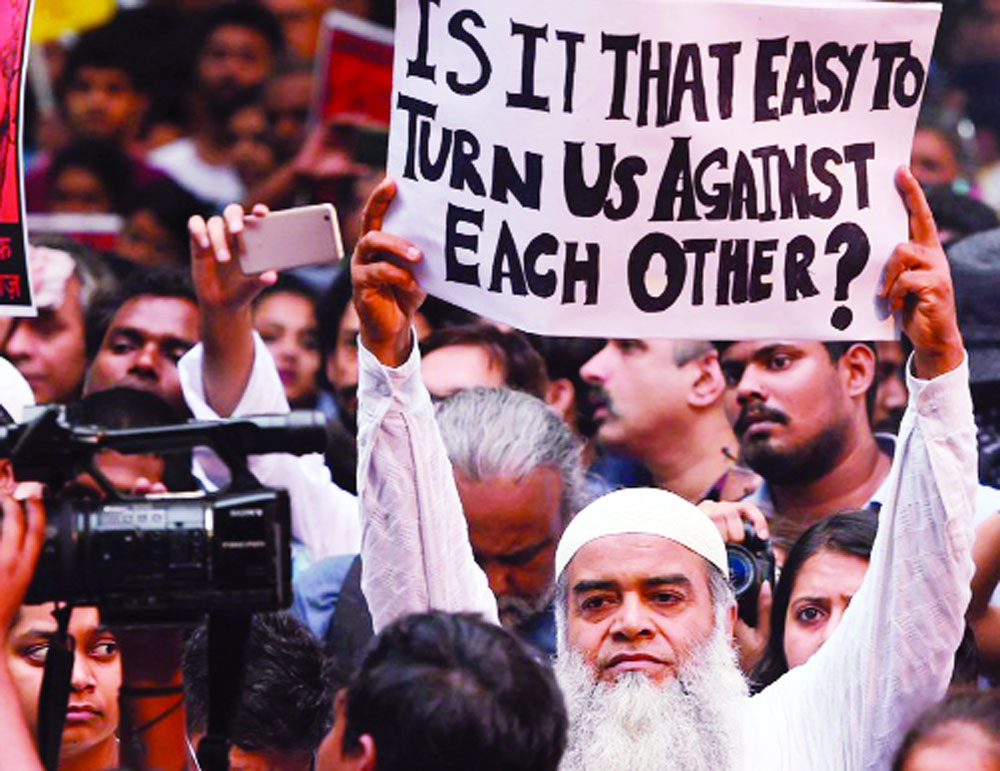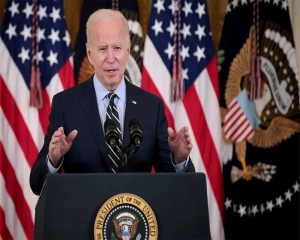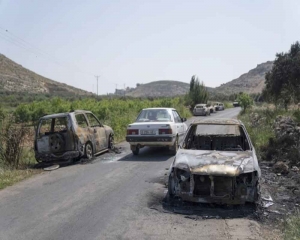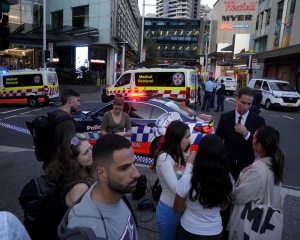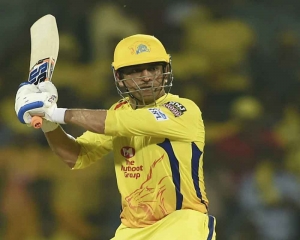It is for the post-Congress Governments, whether in the States or the Centre, to correct the misleading impression created of Muslims. This provokes one to think as to what path the Muslim community of India could now tread in order to be stakeholders in amity
Aurangzeb’s biography by Prof Audrey Truschke, published in 2017 by Penguin Books, provokes one to think as to what path Muslims of India should now tread in order to live in amity. It is well-known that the name Aurangzeb is widely disapproved. In course of my travels, I came across only one shop named after the Emperor — it is situated in Kidderpore, Kolkata — and only recently, for the first time, I heard of a Kashmir police constable by the name Aurangzeb, who was killed by terrorists. The third example was the prominent road named after him, which has now been changed to Dr APJ Abdul Kalam Road without any protest which, though, has been resented by Prof Truschke in her book. Now only a lane by the name survives. Does this not reflect a widespread disapproval of Aurangzeb by Muslims as well as by Hindus and Sikhs?
For, the first 67 years after Independence, Muslims in India have survived the trauma of Partition quite comfortably, except for periodic riots with Hindus, so necessary for a Congress-style secular party to survive in power. Under communist secularism in Kerala and West Bengal, its rule was almost entirely riot-free. So was the so-called Hindu rule under the BJP and earlier under the Jana Sangh in a couple of States, except for 2002 in Gujarat, which was provoked by the burning of railway bogeys that claimed 58 lives in Godhra. The lesson of this short history is that a Muslim minority can co-exist with a Hindu majority. The reverse ratio, however, is not true as demonstrated by the rapid ethnic cleansing in 1947-48 Pakistan and a similar but chronic process in Bangladesh.
The first lesson to be drawn from this paradox is that for Hindu-Muslim amity, the population of the latter community should not exceed 20 per cent. With 25 per cent in 1947, Muslims were able to force Partition. This, despite being given reservations in jobs as well as separate electorates. Until 1940, they claimed to be a minority, and then to justify Partition, they changed to being a nation. In short, they have a chronic tendency of separatism. Second, the ruling party should not come to power by playing the two communities against each other. The Congress had to remind Muslims periodically what a riot is, and more of it would be their fate if they did not vote for the party. Otherwise, let the Muslim clergy hold veto to power, for example, the Shah Bano alimony, followed by the Muslim Women’s Act.
The pinnacle of this Congress secret of success was reached in the 10-year prime ministership of Manmohan Singh, who several times virtually declared ‘Muslims First’ as his policy and also appointed five commissions and committees of whom the Sachar-led effort was the most talked about. No wonder, the four Modi-led years were filled with complaints by Muslims and their friends repeatedly saying that ‘everyone’ feels insecure. The Muslim clergy no longer held the veto after 67 years of being used to it. That there has been virtually no rioting during the four years across the country, is not appreciated.
Another feature of Muslim performance has been its failure to produce an eminent leader. Mohammad Ali Jinnah was the last one thrown up by the sub-continental ummah. Even he became prominent as a Muslim leader, as it were, more to fulfill the mass desire for delivering Partition and less as a community eminence. A possible explanation could be that Islam, as ethos, prefers autocracy, whether monarchical, military or civilian, but not a Western-type democracy. By contrast, in the sub-continent, Hindu performance has been much better. In the absence of responsible and respected leadership, the Muslim masses have been mesmerised by their clergy as well as the Congress. These two have worked in tandem — the only time the link had snapped was in the 1977, post-Emergency elections — otherwise, their interests are similar. The former wants to keep a grip on the followers, while the latter needs the votes.
From the beginning, the Congress has been pro-Muslim. As a glaring example, Gandhiji had equated a hope for success in his 1921 Non-Cooperation agitation with a victory of his Khilafat movement to save the Caliph on the Turkish throne. The failure of both led to what BR Ambedkar called a 20-year Hindu Muslim civil war until 1940, when the Pakistan resolution was passed at Lahore. A century later this year, Rahul Gandhi did not hesitate to admit that the Congress is a Muslim party. And why not? Because the grand old party has placed the community superiorly to the Hindus; especially Articles 29 and 30 render Articles 14 and 15 a sham. Additionally, the wakfs, which own up to six lakh acres of urban land in the country, have been left untouched by the Government, whereas zamindaris and jagirdaris were abolished on the morrow of Independence. These and other laws make Muslims appear to be the favourite offspring of India while the Hindus may feel like, as they were, step-children.
It is for the post-Congress Governments, whether in the States or at the Centre, to correct the misleading impression created of most of Muslims. Citizens of all hues below 45 years in age are mostly unaware of the facts of Partition. Discussions in the media give the impression that free India’s life began with the Constitution. The earlier years were all part of jahelia or darkness. Instead, an attempt should be made to inform people who voted how in the 1945-46 elections and the run-up to the Partition. As a backgrounder, how in 1940, the League declared that Muslims were a nation and not a minority? It, therefore, had to have a separate homeland or Darul Islam. The League leaders wanted Muslims to transfer to Pakistan and the rest to go to Hindustan. Those who remained behind were to live as aliens with the help of visas issued by the respective Governments. Instead, today Hindustan has probably more Muslims than any other country, except Indonesia. The community itself claims to be poor and backward. It seems it appears to spread backwardness to the States it lives in.
Today, the belt beginning with Uttar Pradesh and ending with Assam via Bihar and West Bengal, is distinctly poorer economically than the rest of India. Although the Ganga flows across the belt, the soil is mostly fertile and there is a great deal of mineral wealth to mine. These States have to be pulled up and, more particularly, the Muslims. If this writer were a Sunni Musalman, he would tell his people that not many of us can emigrate and, therefore, to live happily in India, we should join the mainstream.
Licenced madrasas all over should be given a say — four or five years to come up in their standards to be affiliated to the mainstream boards like CBSE or ICSE. Aligarh Muslim University and Jamia should cease to be Muslim or Islamia since they are entirely State-financed. If not a Uniform Common Code, the community itself could take the initiative and modernise the personal law and draft a Muslim Code Bill. All temples converted to mosques, which are readily reconvertible to mandirs, should be vacated. Around 2,500 or so recycled (built anew with the debris of demolished temples) mosques may be left as they are.
All these suggestions would help Muslims integrate with the rest of the people of Hindustan and share the benefits of national prosperity. The Shias are already on the path to integration. Why not the Sunnis too? All that is being recommended is to favour the ways of Dara Shikoh, away from the misguided whims of Aurangzeb. Both were full blood brothers. But the latter caused and presided over to the fall of the Mughal Empire. Hindustan does not wish to fall similarly.
(The writer is a well-known columnist and an author)













